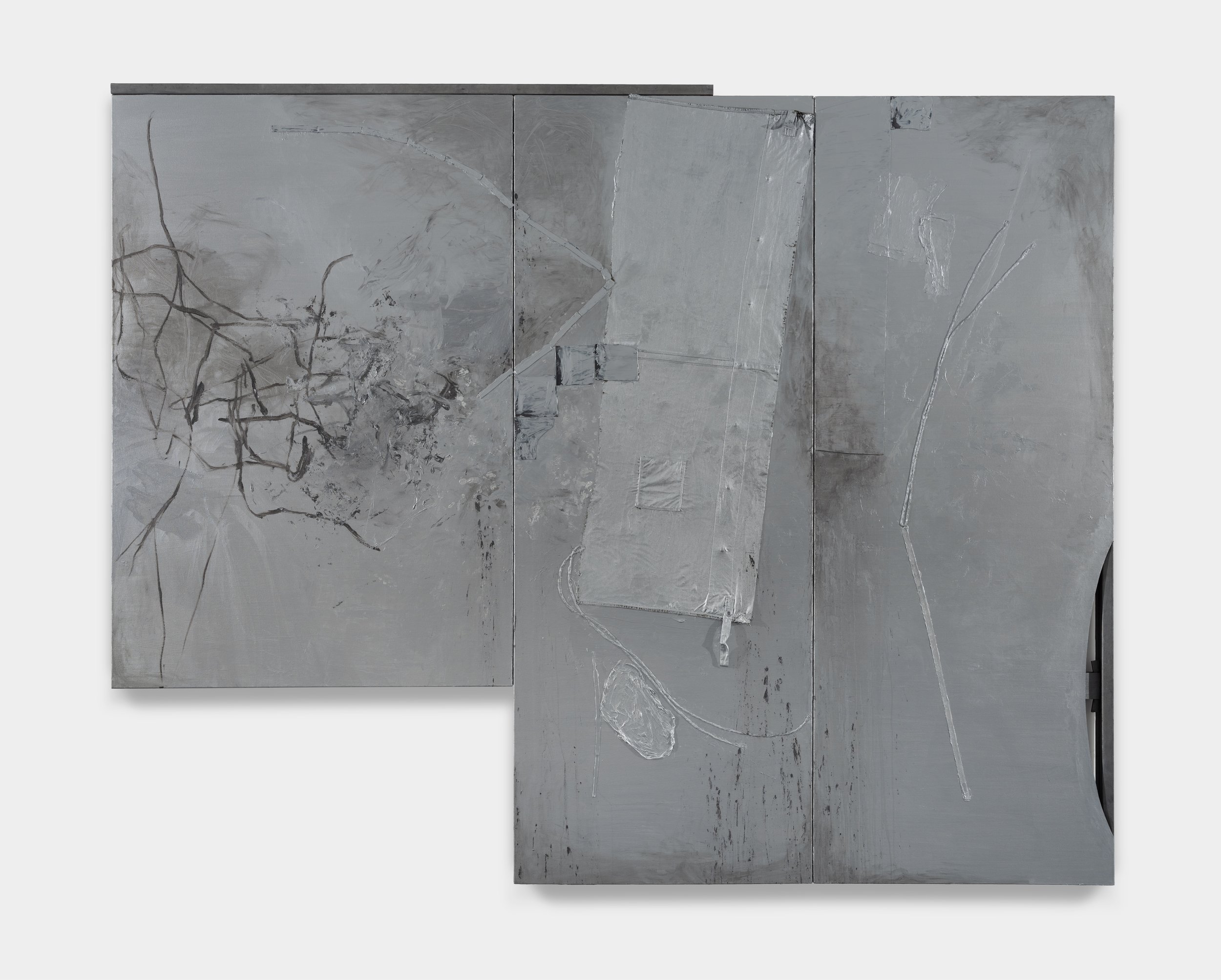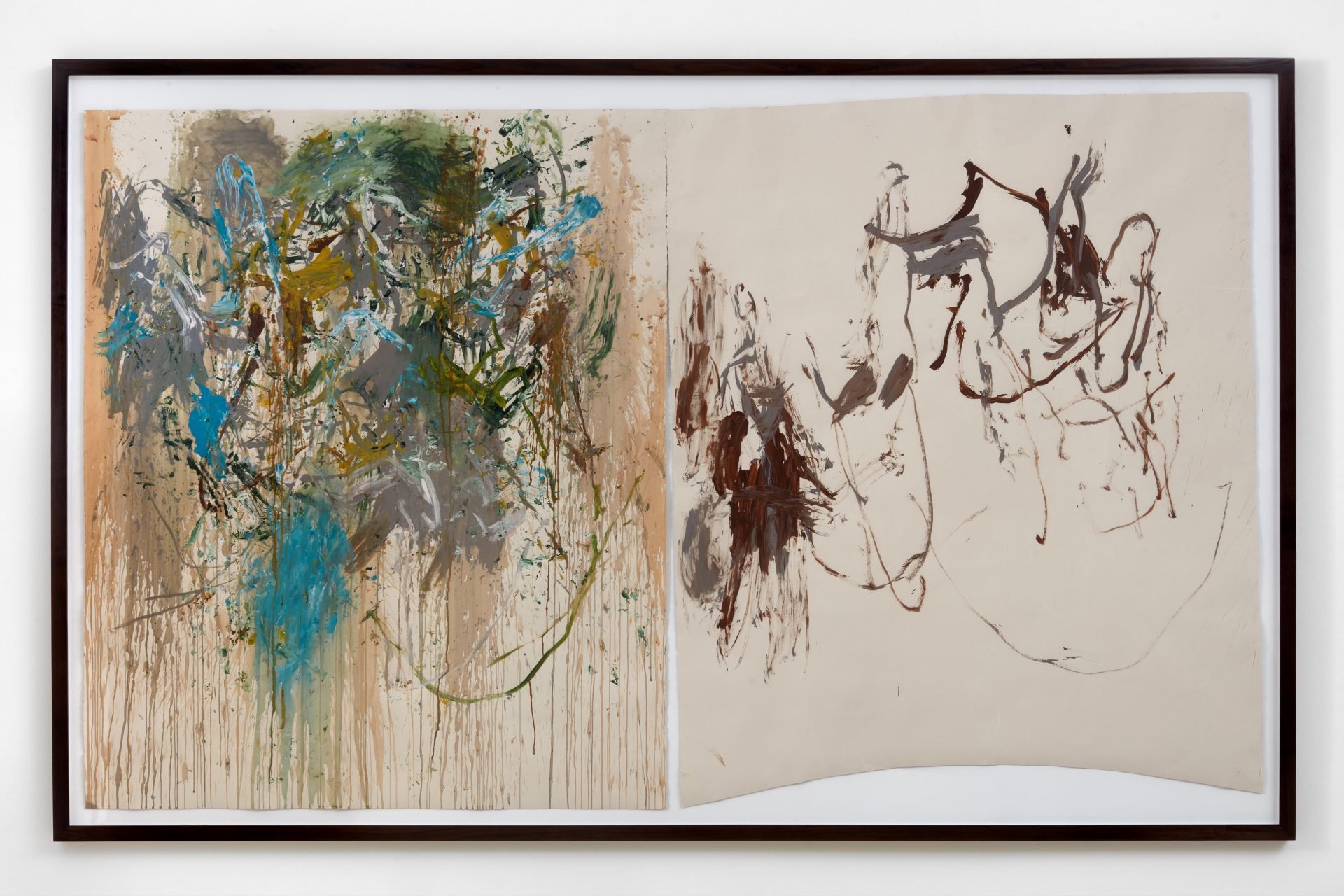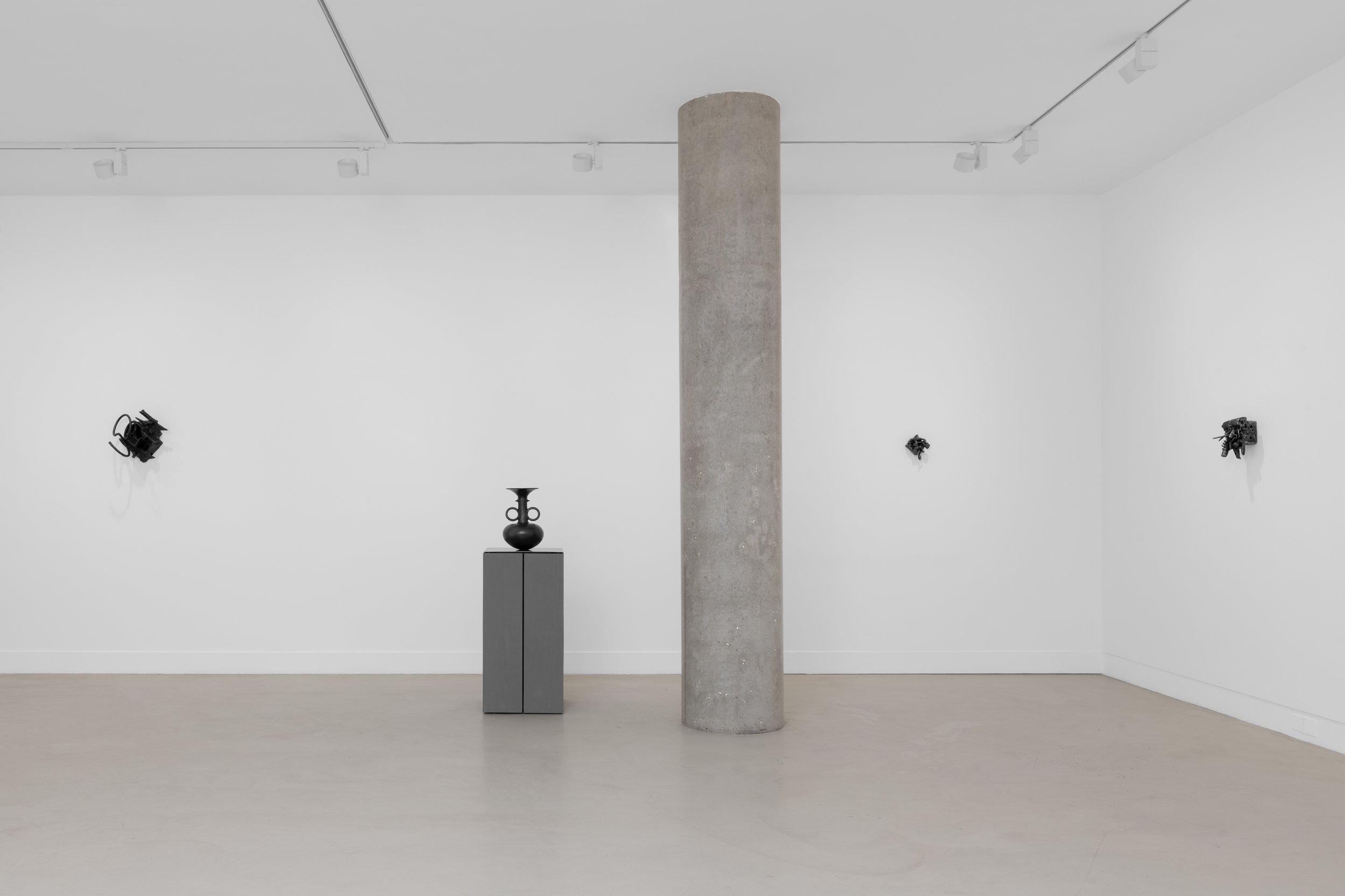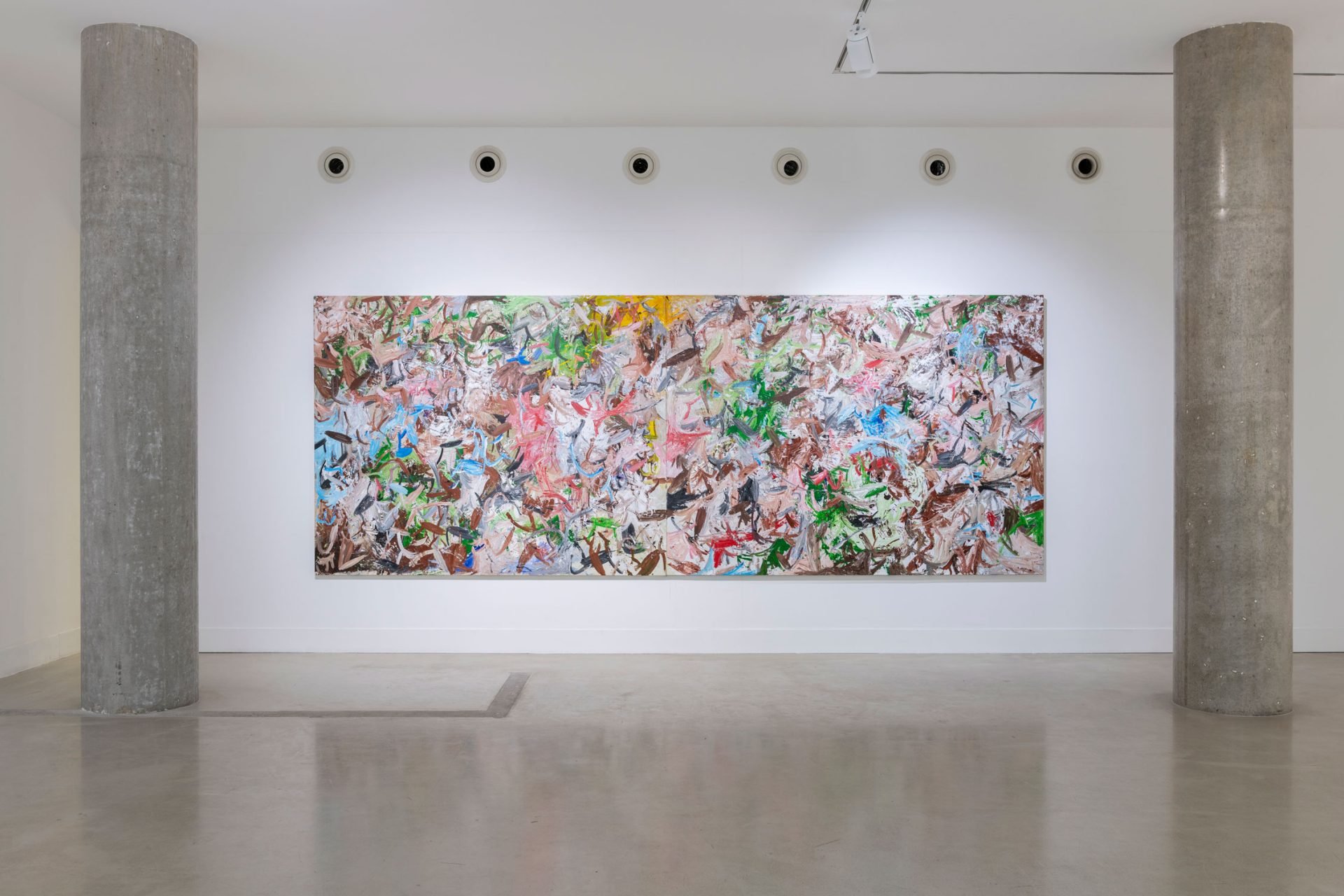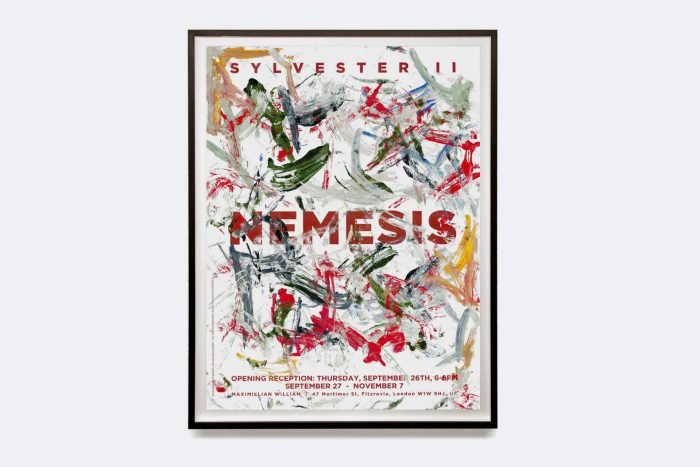Reginald Sylvester II
Reginald Sylvester II (b. Jacksonville, NC, USA, 1987; lives and works in Hudson, NY) creates large-scale paintings and sculptures that trace the generative threshold between the two mediums. Working predominantly in abstraction, he expands the language of his painting practice by incorporating materials such as rubber, tarp, aluminium and steel. His singular approach lends his paintings a sculptural presence and imbues his sculptures with a painter’s sensibility.
While grounded in traditional painting techniques, Sylvester II ventures beyond the conventions of stretched canvas, working on surfaces that both absorb and reject paint. His layered, often multi-partite works investigate the language of his chosen mediums: stretcher bars are left exposed, becoming part of his compositions, while oxidised and patinated metal surfaces evoke the histories of gestural painting. Sylvester II also transcends the surface, creating monumental sculptures that reference forms observed through painting and from his environment.
The artist is drawn to materials that relate to his personal history, spirituality, or broader societal narratives. In his approach to assemblage, Sylvester II appropriates byproducts of his making process, physically attaching studio debris to works to enrich their tactile quality and textural narrative.
Sylvester II’s debut West Coast solo exhibition, T-1000, opened in November 2023 at Roberts Projects, Los Angeles. In March 2023, Sylvester II opened his second solo institutional exhibition in a North American museum, Green Gate, at the Kemper Museum of Contemporary Art in Kansas City, MO. This followed Painter's Refuge: A Way of Life, which opened in 2022 at the Harvey B. Gantt Center for African-American Arts + Culture in Charlotte, NC. Sylvester II’s work is held in public collections including Nasher Museum of Art, NC; Harvey B. Gantt Center for African-American Arts + Culture, NC; Kemper Museum of Contemporary Art, MO; North Carolina Museum of Art, NC; Newark Museum of Art, NJ; Pérez Art Museum, Miami, FL; ICA Miami, FL; Ackland Art Museum, NC; Wolverhampton Art Gallery, UK; Spazio 1, Lugano, Switzerland; and Fondazione Stelline, Milan, Italy. Previous group exhibitions include Sensibilities at Maximillian William, London (2023), Black Abstractionists: From Then ’til Now, curated by Dexter Wimberly at the Green Family Art Foundation, Dallas, TX (2022), and 100 Years, Gagosian and Jeffery Deitch, Miami, FL (2022). Other recent solo exhibitions include CUTS, Maximillian William, London (2022); Feelin’ Blue, The Arts Club, London (2022); With the End in Mind, Maximillian William, London (2021); NEMESIS, Maximillian William, London (2019); and The Rise and Fall of a People, Fondazione Stelline, Milan (2017). Sylvester II is featured in Prime, London: Phaidon, 2022, a survey of contemporary art. Monographic publications by Sylvester II include Painter’s Refuge: A Way of Life, New York and Charlotte: Pacific and the Harvey B. Gantt Center, 2022; With the End in Mind, London and New York: InOtherWords, Maximillian William and Natchez; and NEMESIS, London: Maximillian William.
SELECTED WORKS
Reginald Sylvester II; Autumn Under Fire, 2024; Acrylic and studio debris on canvas; 121.9 x 152.4 cm; 48 x 60 in.;
Reginald Sylvester II; Metal Incision, 2024; Aluminum blackener on aluminum; 193 x 76.2 x 3.5 cm; 76 x 30 x 1 3/8 in.; Edition of 3 plus 1 AP;
Reginald Sylvester II; Welded Tribute, 2024; Aluminum blackener on aluminum; 167.6 x 228.6 x 3.5 cm; 66 x 90 x 1 3/8 in.; Edition of 3 plus 1 AP ;
Reginald Sylvester II; T, 2023; Acrylic on rubber over wood with cord; Overall: 288 x 208 cm; Each panel: 208 x 77 cm;
Reginald Sylvester II; Synthesis, 2023; Acrylic, studio debris, cord and steel beam on rubber over exposed substrate; 208.3 x 284.5 cm;
Reginald Sylvester II; Gate (Millscale), 2023; Steel; 426.72 x 85.09 x 10.16 cm;
Reginald Sylvester II; Oil Slick, 2023; Acrylic and drab shelter halves on rubber with exposed substrate; 193 x 177.8 cm;
Reginald Sylvester II; Cell 001, 2023; Torqued Aluminum Tray Frame With Acrylic On Rubber Slab; 182.88 x 152.4 x 25.4 cm;
Reginald Sylvester II; Scission, 2023; Acrylic On Rubber With Aluminum Beam; 193.04 x 177.8 cm;
Reginald Sylvester II; Ridgewood, 2023; Acrylic, rubber, studio debris and steel beam on canvas over exposed substrate; 233.7 x 274.3 cm;
Reginald Sylvester II; Amalgamation, 2023; Acrylic, Rubber, And Studio Debris On Canvas; 182.88 x 228.6 cm;
Reginald Sylvester II; Memory, 2023; Acrylic And Studio Debris On Rubber With Exposed Substrate; 193.04 x 177.8 cm;
Reginald Sylvester II; Offering III, 2021; Acrylic, rope, paper, and rubber over wood; 92 x 80 in;
Reginald Sylvester II; Offering VII, 2021; Acrylic, rope, paper, tarp, and rubber over wood; 82 x 70 in;
Reginald Sylvester II; Offering IV, 2021; Acrylic and studio debris on rubber; 72 x 60 in;
Reginald Sylvester II; Praise Our Way Out The Grave, 2021; Acrylic and rope on u.s military issue olive drab shelter halves; 94 x 75 in;
Reginald Sylvester II; Four Corners, 2021; Acrylic on u.s military issue olive drab shelter halves; 82 x 70 in;
Reginald Sylvester II; Last Laugh, 2021; Bronze slave transport, recycled steel car parts, steel rod, and rope; 37.5 x 17.5 x 4 in (95.25 x 44.45 x 10.16 cm);
Reginald Sylvester II; Untitled, 2022; Acrylic on 90lb Steel Grey Stonehenge paper; 59.88 x 98.8 in;
Reginald Sylvester II; Untitled, 2022; Acrylic on 90lb Steel Grey Stonehenge paper; 76.3 x 58.7 cm;
Reginald Sylvester II; Untitled, 2022; Acrylic on 90lb Steel Grey Stonehenge paper; 163 x 137.5 cm;
Reginald Sylvester II; Untitled, 2022; Acrylic on 90lb Steel Grey Stonehenge paper; 71 x 84.5 cm;
Reginald Sylvester II; The Prayers of the Slaves are the Wings that Carry Us, 2020; Acrylic on canvas; 91 x 74 in (231.14 x 187.96 cm);
Reginald Sylvester II; Rise Young Gods All Paths Lead to Lazarus, 2020; Acrylic on canvas; 92.5 x 73 in (234.95 x 185.42 cm);
EXHIBITIONS
PUBLICATIONS
RELATED CONTENT










